The sweet and tangy fruit, in our country, has many uses apart from tickling our taste buds. Here are some of the wonderful benefits of tamarind!
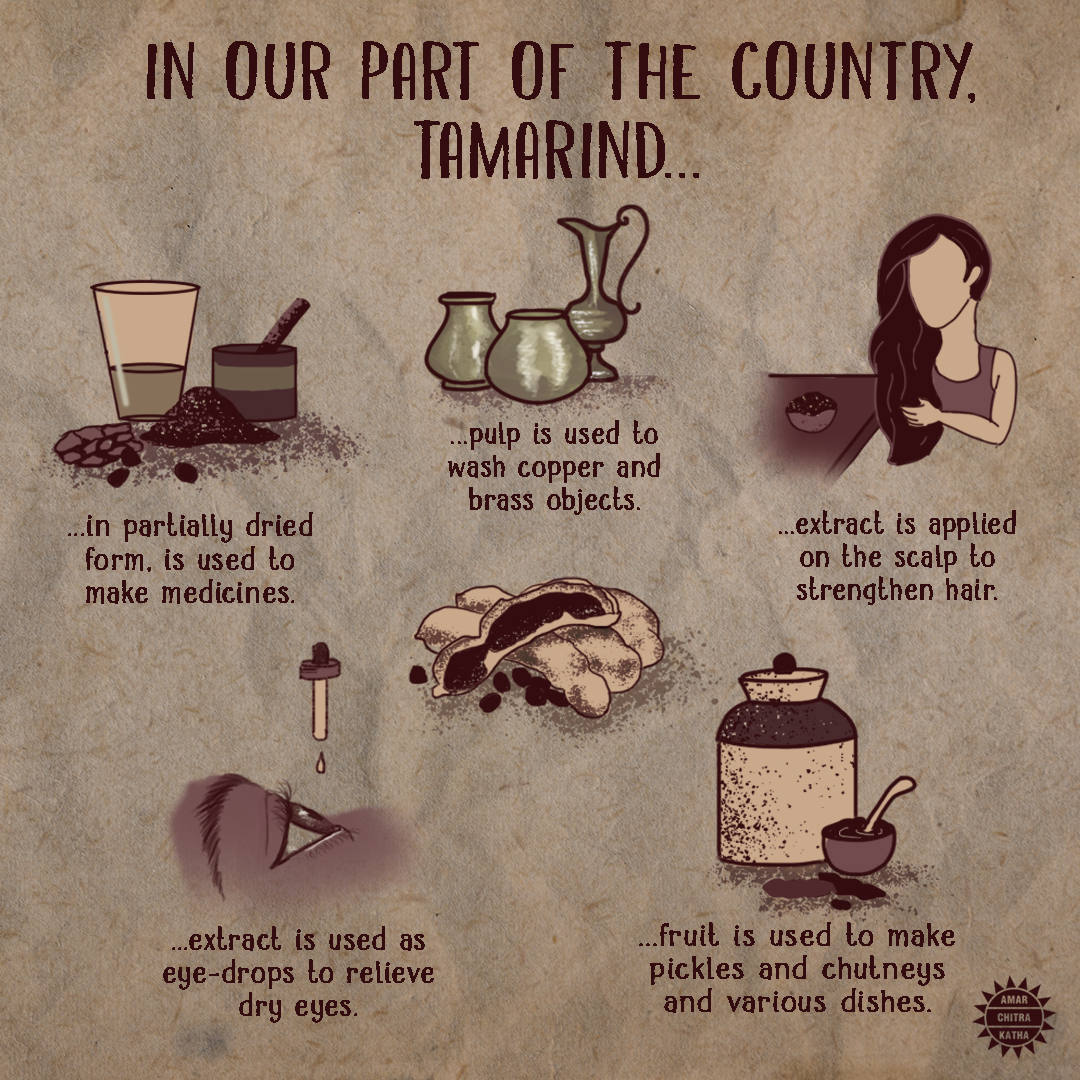
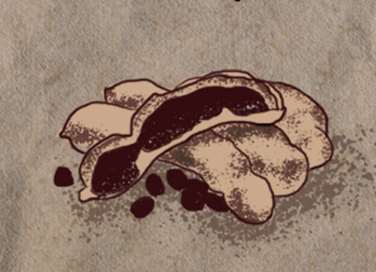

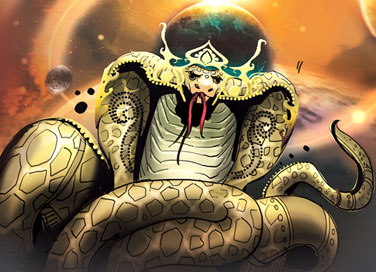
In certain parts of North India, such as Varanasi, traditional akharas i.e. venues for wrestling, are cleaned thoroughly and decorated on the occasion of Nag Panchami. In Hindu mythology, snakes often symbolise virility and it is this aspect of the snake that the wrestlers worship on this day.
Note: The catching and using of snakes are banned under the Wildlife Protection Act 1972. Citizens must offer prayers to snake idols or images.

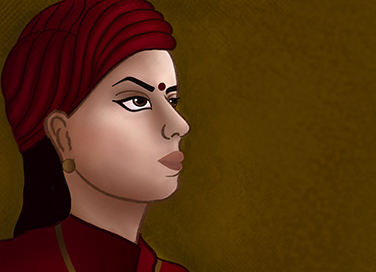
By Kayva Gokhale
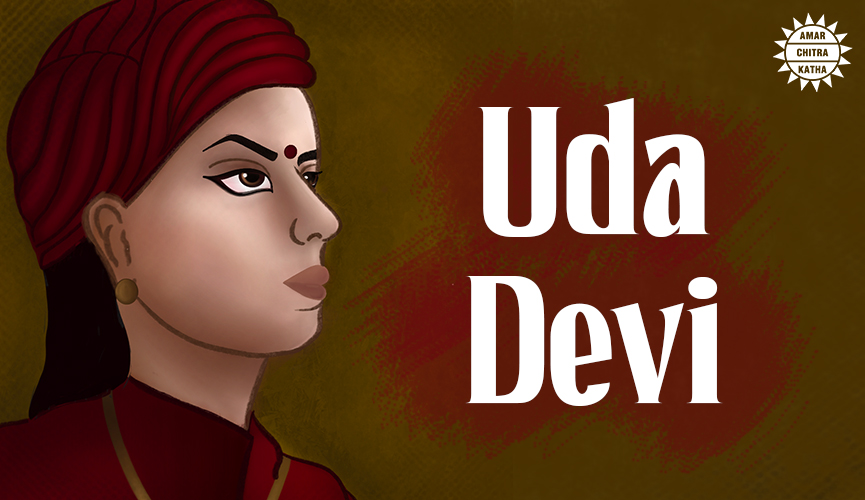
Indian history is filled with oft-forgotten, brave women who have played an integral part in the freedom struggle. Uda Devi, a warrior who was martyred in the First War of Independence in 1857, is one such braveheart. Born in Ujiriao village in Lucknow, Uttar Pradesh, Uda Devi became associated with Begum Hazrat Mahal due to her determination to participate in India’s freedom struggle. The Begum, who was the wife of Nawab Wajid Ali Shah, was leading the movement in Awadh. With her help, Uda Devi formed a women’s battalion, largely consisting of members of the Dalit community, in order to fight the British regiment stationed at the Gomti River. The women of this battalion were called ‘Veeranginis’, meaning brave heroines.
Uda Devi’s husband, Makka Pasi, had been martyred at the battle of Chinhat. Motivated by her grief, Uda Devi bravely risked her life to ensure that the British regiment could not break through the women’s battalion and reach reinforcements.
While much has not been written about the specifics of the battle, the circumstances of her death have been recorded by British commander Campbell and W. Gordon-Alexander, in their accounts of the movement. According to them, Uda Devi climbed onto a pipal tree and began firing at British soldiers. She reportedly shot down 32 to 36 soldiers before she was spotted. Upon being seen, she was immediately shot and killed. However, it was only when she fell to the ground that the soldiers discovered her to be a woman. It is said that Campbell was impressed by her bravery and bowed to her in respect.
Uda Devi continues to inspire all those who know about her courage and her sacrifice. A statue of her stands in Sikandar Bagh in Lucknow. Her story is a reminder of the role that women, especially from the underprivileged class, played in achieving the freedom that we enjoy today.
Read the stories of freedom fighters of the independence movement in our latest release First War of Indian Independence, now available on the ACK Comics App.

By Dheer Sanghi
India has one of the longest and richest histories of any nation in the world. From being home to one of the oldest civilisations: the Indus Valley civilization, to the Mughal empire, to British rule, to finally becoming an independent nation; preserving India’s story is pertinent to our national identity and culture. One of the best mediums to do so are libraries. Filled with influential books, important manuscripts, and inspiring art, libraries make knowledge accessible to the masses. India has hundreds of such libraries, all worth visiting, but this article will focus on a few that you must see.
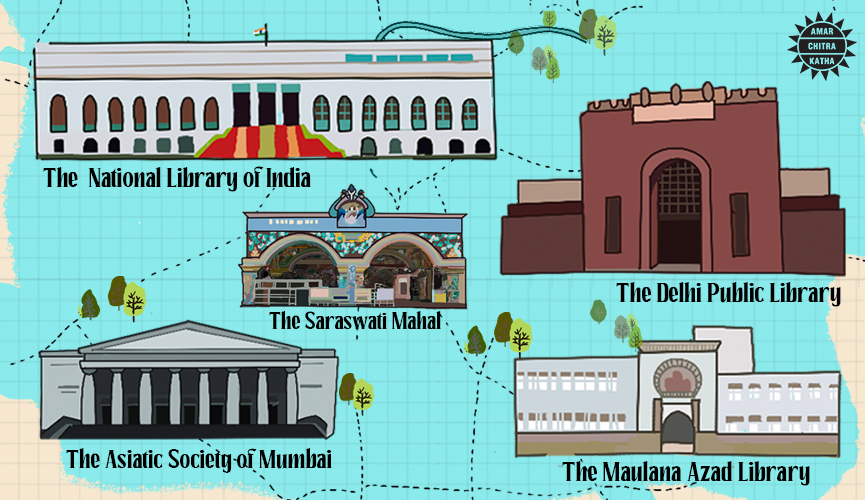
Located in Kolkata, the National Library of India is the nation’s largest library in terms of volume. Housing over 2.2 million books, manuscripts, and records, its purpose is to amass and maintain printed texts made in India. The history of the National Library of India is a fascinating one. Starting off as the Imperial Library (founded in 1891) by merging smaller libraries in the area, it also doubled up as the official residence of the Governor-General of India until Independence. It was only open to government officials, however, restricting the public from accessing texts. In 1948, the new Indian government signed the Imperial Library (Change of Name) Act, resulting in the library being called the National Library. Another change twenty eight years later added ‘of India’ to the library’s name. Furthermore, a decade ago, the building made headlines as the Ministry of Culture decided to restore it. Part of the restoration process resulted in a secret room being found, on the ground floor with no entrances and exits. Many have theorized the purpose of this thousand square foot room, but no proof has ever been found. Due to its historical importance, the library was opened to the public on February 1, 1953, and can now be visited by anyone on any day with the exception of Independence Day, Republic Day, and Gandhi Jayanti.
Another library that has colonial roots is the library of The Asiatic Society of Mumbai. Created with the goal of “promoting useful knowledge, particularly such as is now immediately connected with India,” the society preserves original documents and texts, conducts research, and acts as a forum to discuss relevant issues. Created as the Literary Society of Bombay in 1804 by Sir James Mackintosh, the organization became affiliated with the Royal Asiatic Society in 1830. A few years after gaining independence, the group separated from the Royal Asiatic Society and has been funded by the central government ever since. The library holds very interesting books, over 15000. Additionally, many thousand ancient manuscripts, including some written on palm leafs. 16th Century illustrated passages from the Mahabharata and the 13th century manuscript of the ‘Vasupujyacharita’ that talks about the twelfth Jain Tirthankara are just some of the historical documents stored. The society also has one of two known original copies of Dante’s Divine Comedy, one of its prized possessions. Although the library is only open to members, all files have been digitised, and can be found easily online.
The Maulana Azad Library in Aligarh is the largest university library in Asia. With over 1.8 million books, the library’s impressive collection is matched with an impressive surrounding. Seven storeys high, the building is also bordering 4.75 acres of gardens and lawns. Though only 60 years old, the foundation of the building was laid in 1877 under the name Lytton Library after the then Viceroy of India. Nevertheless, the current building was inaugurated in 1960 by Prime Minister Jawaharlal Nehru.
The last library on this list is the Saraswathi Mahal Library. Located in Thanjavur in Tamil Nadu on the beautiful grounds of the Thanjavur palace, this library is one of the oldest in all of Asia, founded in the 16th century. Apart from the various books, this library also contains many precious ancient manuscripts and texts in a multitude of languages. Started by the Nayak Kings of the region as a private library for their own enjoyment and learning, Saraswathi Mahal was not always open to the public. The Kings however only ruled until 1676. Luckily, their successors, the Maratha rulers who captured Thanjavur improved the library, adding to the collection and employing Pandits to go far and wide across India to find new works. The library was opened to the public in 1918 and anyone can visit.
India has a plethora of magnificent libraries holding vast amounts of knowledge and culture in many different languages. Take some time to visit one close to you, or if possible, one of these four!

By Dheer Sanghi
The Olympics, the world’s premier sporting competition, hosts thousands of athletes and over two hundred nations. Originating in Olympia, Ancient Greece, the Olympics have become a staple, bringing in millions of viewers every four years. With the Tokyo 2020 Summer Olympics well underway, this is as good a time as ever to look back at India’s century-long history at the games.
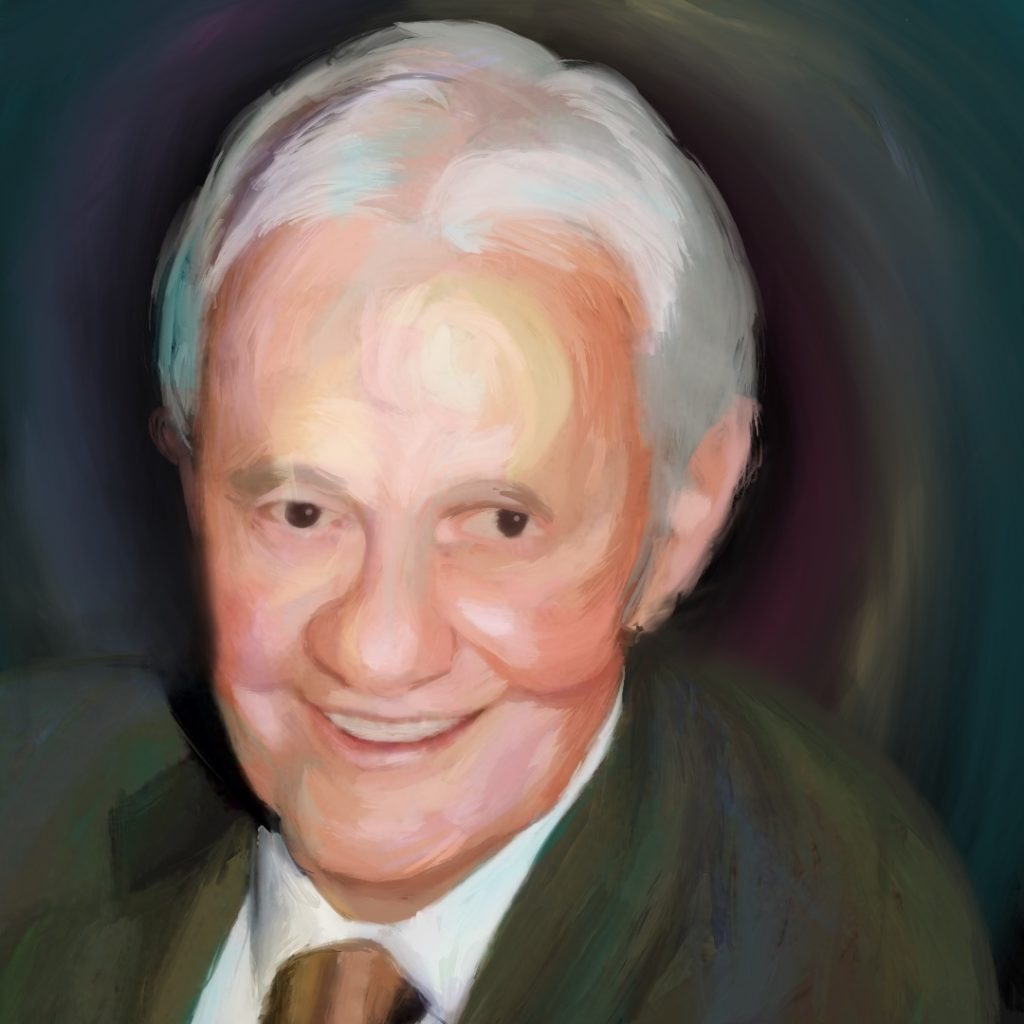
India first participated during the Paris 1900 Olympics. Though India did not send a team, a Calcutta-born athlete of British nationality named Norman Pritchard won two silver medals in the two hundred metre sprint and two hundred metre hurdle competitions whilst representing India. Both wins were not only historic for India as Pritchard was the first to win an Olympic medal representing an Asian nation. Interestingly enough, historical records of the British team selection show that Pritchard was meant to compete for Great Britain. The International Olympics Committee however still deems those medals to be under India’s name.
The next time Indians took part in the Olympics was in 1920, where they sent six athletes. Though no medals were won that year, it led to India sending a team to every subsequent game, the size of which dramatically increased in recent history. This year a record number one hundred and twenty-seven don Indian jerseys in Tokyo, compared to only six a century ago.
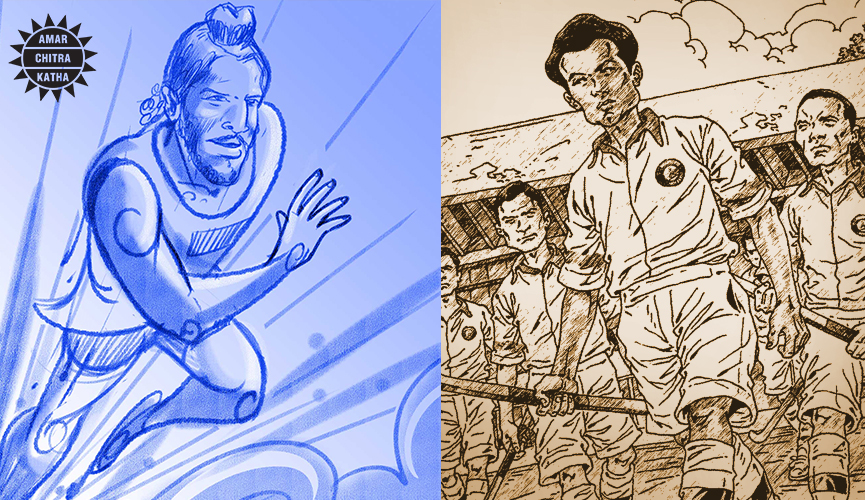
The last hundred years have resulted in many ‘firsts’ for India and cemented many Indian athletes as at the top of their fields. Inarguably, India was most dominant in, fittingly, its national sport – Field hockey. From 1928 to 1980, India won eight gold medals, one silver medal, and two bronze medals, led by various captains, including Major Dhyan Chand, known as the Wizard of hockey. Born to a Rajput family in Allahabad, Chand joined the British India Army. There he played hockey, developing his talent. Though at first hesitant to focus on sports, he soon exclusively started playing in army tournaments and games, resulting in recognition for his skill. Major Chand’s long list of accomplishments includes three Olympic gold medals in 1928, 1932, and 1936 (a year where he captained). In addition to this, Chand was awarded the Padma Bhushan, India’s third most prestigious civilian honour, and his birthday, August 29, is marked as India’s National Sports Day.
Another icon of Indian athletics who started in the army is Milkha Singh, The Flying Sikh. Growing up orphaned during the partition, Milkha Singh is arguably the nation’s best athlete, receiving the Padma Shri, the fourth highest civilian honour. He was the first athlete to win gold in the four hundred metre dash in both the Asian and Commonwealth games and participated in three Olympics, in 1956, 1960, and 1964. Though never winning a medal, his four hundred metre sprint in 1960 has become a worldwide favorite, with Singh being in the lead for most of the race. His superb athletics has also resulted in a biopic named “Bhaag Milkha Bhaag,” which shares his life story and the challenges he has had to overcome.
Milkha Singh is not the only Olympic athlete who has a riveting biopic made after them. Mary Kom, a flyweight boxer hailing from humble beginnings in Manipur has changed the landscape of Indian sports and inspired millions of girls across the globe. Shattering records nationally and internationally, Kom became the first female to win eight championships. Also participating in the London 2012 Olympics, she won a bronze medal, making her the first Indian woman to win a medal in the sport. Since her triumphs in boxing, Mary Kom has become a politician, working to better the lives of her constituents, and has won the Padma Vibhushan, the second-highest civilian honour.
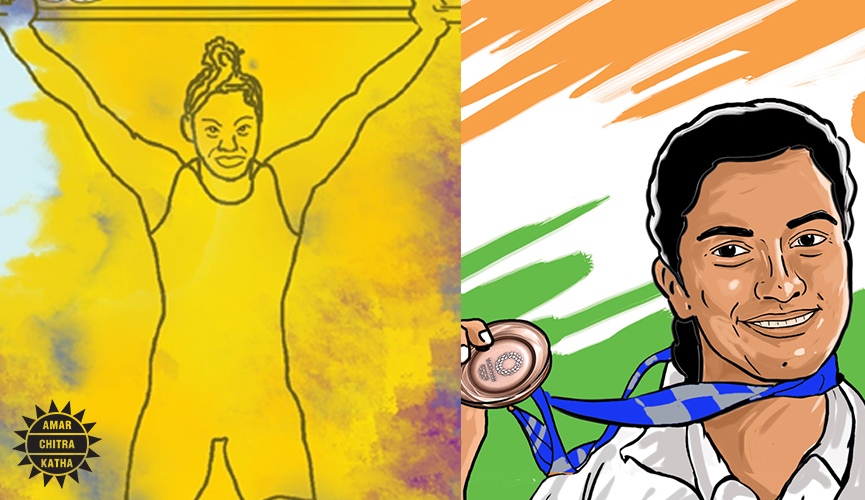
These three sporting legends, as well as everyone else who takes part in the Olympics under the Tiraṅgā flag, have made Indian athletics what it is today. Older competitors like Leander Paes (tennis doubles superstar) and Khashaba Jadhav (bronze medalist wrestler) set a strong foundation for athletes to come. Abhinav Bindra (India’s only individual gold medalist), Saikhom Mirabai Chanu (a silver medal weightlifter), P.V. Sindhu (a two-time badminton medal winner), and other more recent sportspeople show that Indian sports have a promising future and have been influential to so many.
These Olympics, let’s celebrate India’s long journey during the games and the athletes that make it possible. Go India!
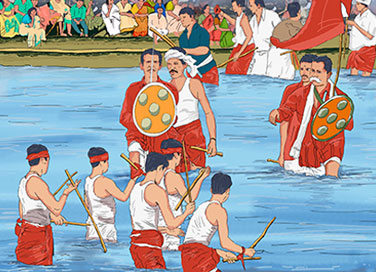
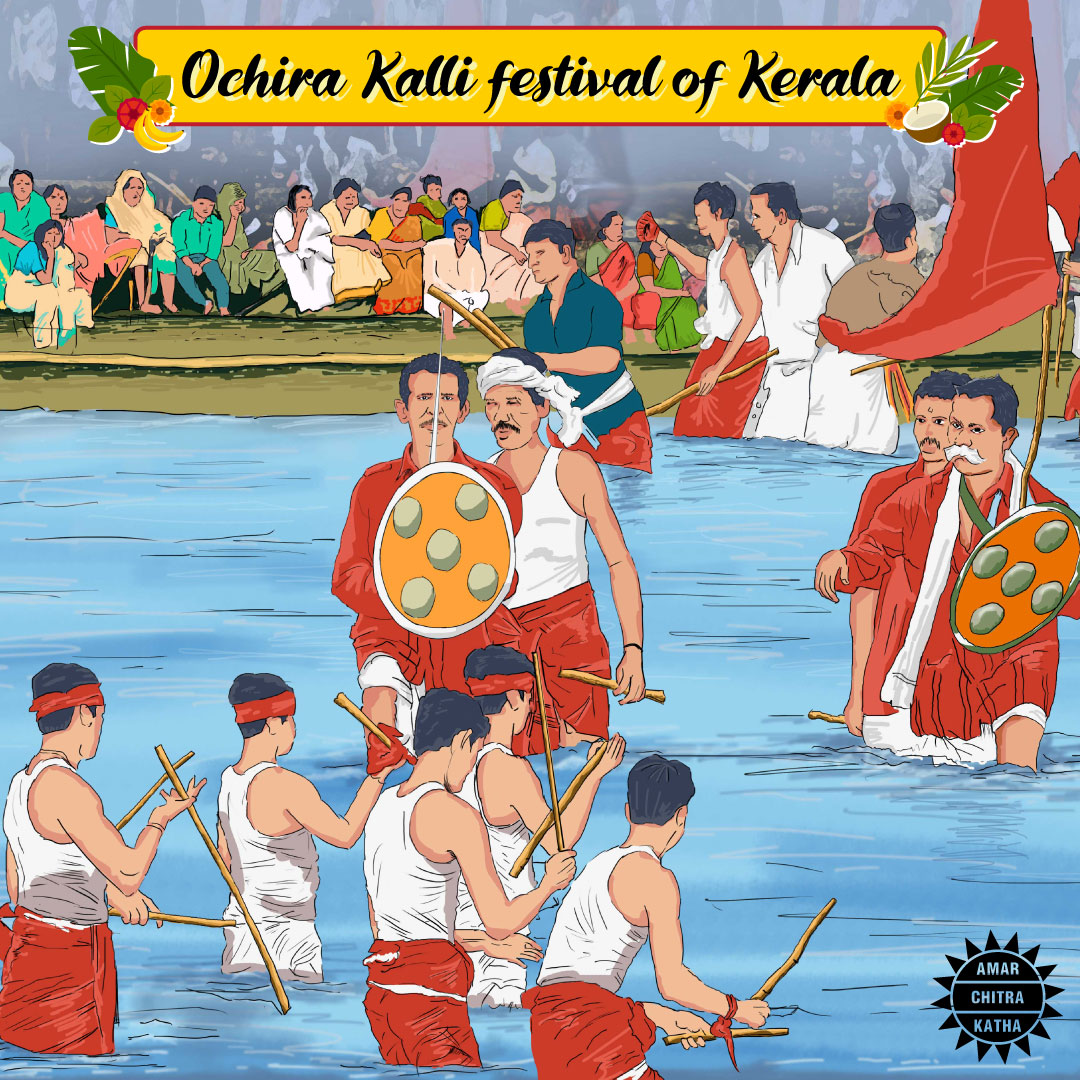
Named after the town it takes place in, Ochira Kalli is a local festival celebrated at the Ochira Parabrahma Temple in Kerala in the month of June. It commemorates the battle of Kayamkulam, which was fought on the fields around the temple. The festival is celebrated through a ritualistic mock battle between two groups in the waterlogged paddy field near the temple. The bulls hold a special place here. Edduppu kaala, huge bull idols, made of hay and cloth are carried from their site of creation to the Ochira temple as a part of the celebration.
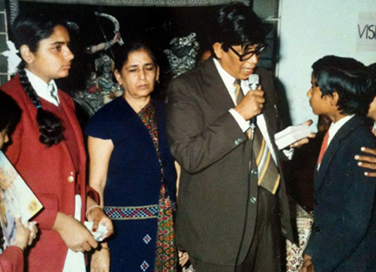
By Reena Puri
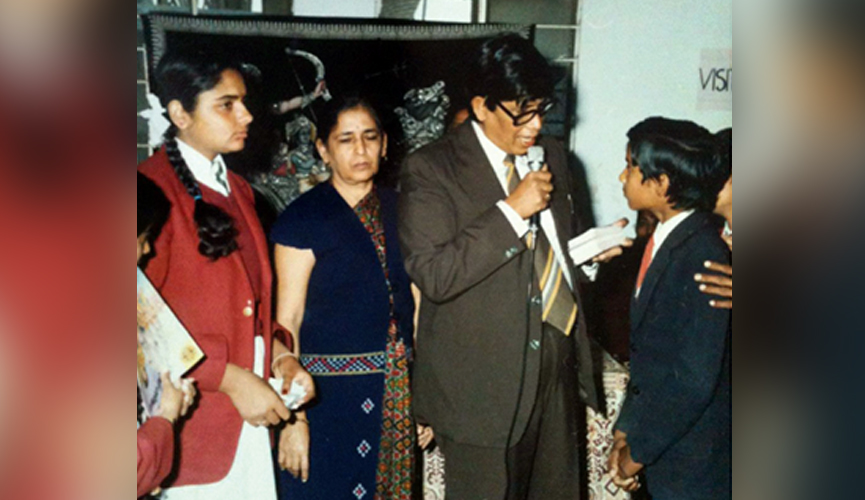
The hall would be abuzz with excitement. The chatter of 2000 children would drown out the last-minute instructions on stage which Lalita Pai would be giving the ever-patient Jubel D’Cruz, who ensured that everything that was needed was in place. As for Uncle Pai, he would be as excited as the children, jumping from one side of the stage to the other while his team arranged the children in neat long queues on two sides of the hall. There was a highly electric atmosphere at the beginning of every ACK quiz show.
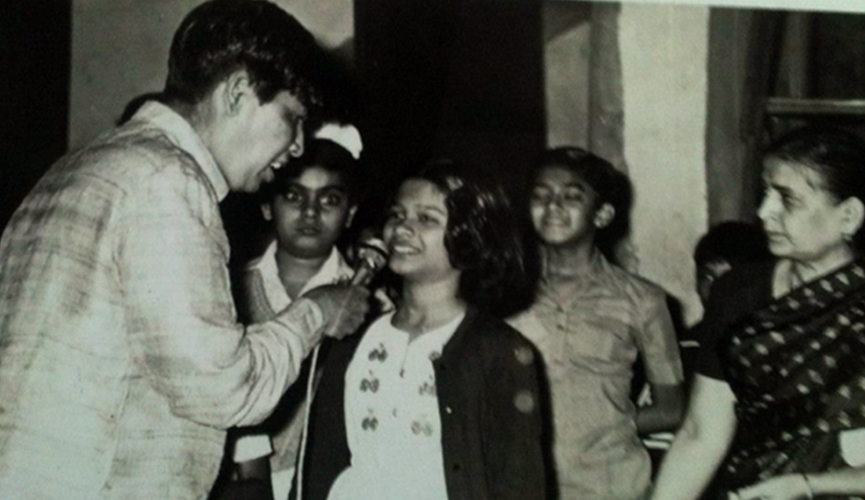
There would be so much energy and crackling anticipation as each child clutched the number the team would have handed over and stood in a constantly fidgety line waiting for her or his turn to answer Uncle Pai’s question. The questions came in a never-ending stream. On history, science, mythology, famous personalities and so many other subjects. Ten children were called up on stage at a time. Each one answered an individual question. The system worked like clockwork except for Jubel who could often be seen determinedly running after a child, who hadn’t answered correctly, waving a copy of Tinkle.
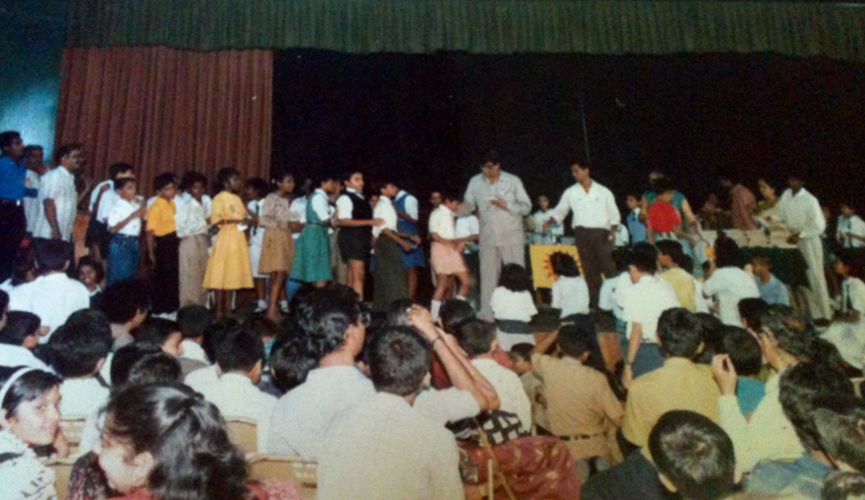
Quiz time with Uncle Pai was legendary. Despite having halls spilling over with children there was not one child who did not get a chance to answer or went away without a Tinkle or an Amar Chitra Katha. The maxim was, if you knew the questions you went into the next round and if you couldn’t answer, you went back to your seat with a comic!
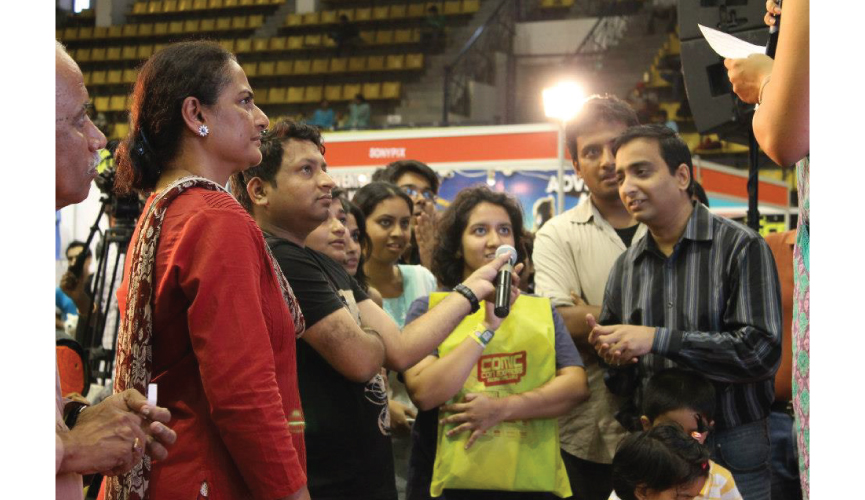
Anant Pai held quiz contests all over the country. Schools and parents waited for him to announce a quiz in their town or city and primed their children to compete. It was a quiz contest that inspired Mr Pai to start Amar Chitra Katha and it was the quiz contest that popularised his comics all over India. Even today, there are adults who nostalgically remember quiz contests they took part in and got a chance to meet their beloved Uncle Pai.
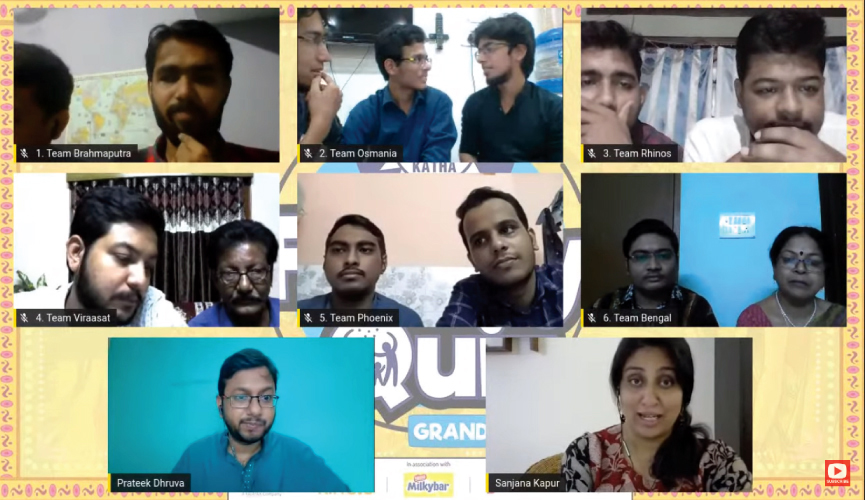
Watch all the episodes of ACK Family Quiz Season 1 here.
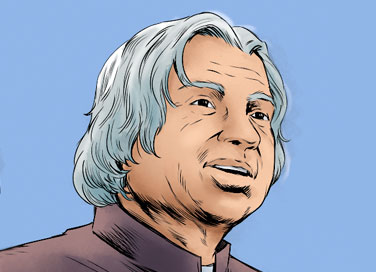
By Srinidhi Murthy
Avur Pakir Jainulabdeen Abdul Kalam was loved and respected as a scientist, a teacher, a visionary, and then as the 11th President of our country. No one would have thought that this little boy from Rameswaram would one day be honored with the Bharat Ratna, India’s most prestigious award, and will always be remembered for his vision for India.
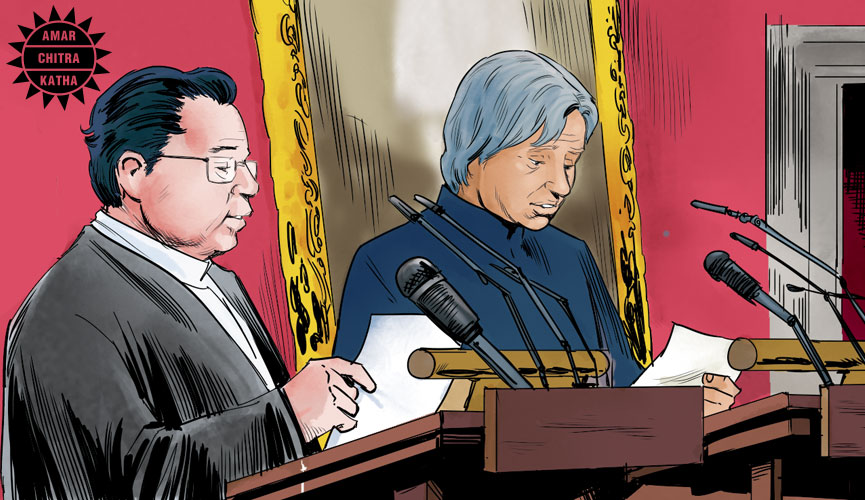
Born on 15th October 1931, Abdul was the youngest child of Jainulabdeen and Ashiamma. His father was the Imam at the local Mosque of Rameswaram and led worshippers during prayers. Many people considered him to be a healer. They brought water to him and he dipped his fingers into it while chanting prayers. This water was then used for healing people. His father often explained to young Abdul the power of faith and prayer. This advice probably stayed with him throughout his lifetime.
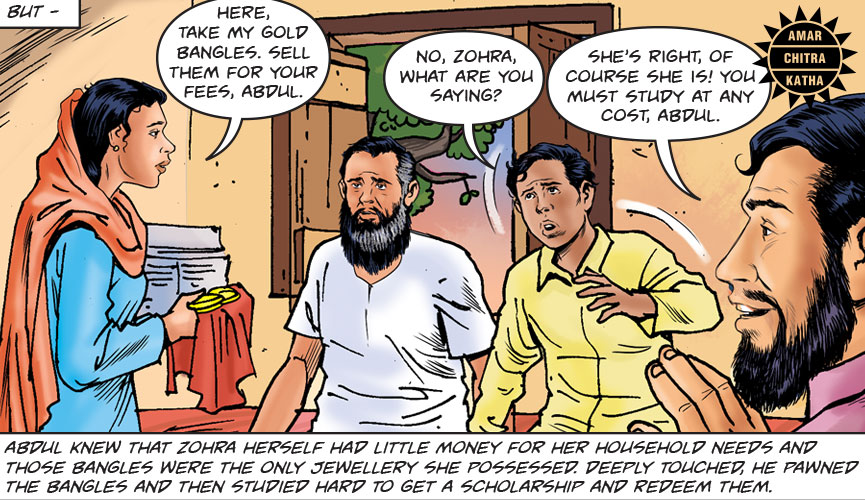
Young Abdul Kalam got admission into the Madras Institute of Technology. His parents did not know how to meet the cost of his higher education. His elder sister, Zohra gave her gold bangles to make ends meet even though she had little money for her own household needs. Abdul was touched by this selfless gesture. He studied hard to get a scholarship to redeem the piece of jewellery that she had given up.
After completing his education, Dr Kalam got a job at the Indian National Committee for Space Research as a Rocket Engineer. There he was introduced to Dr Vikram Sarabhai, one of the pioneers of India’s Space Programme. Kalam was assigned to work with Group Captain VS Narayanan to Develop a Rato, which is a Rocket-assisted Take-off system, in eighteen months. The team successfully completed the project in just sixteen months and conducted sixty-four Rato Static tests. This saved the country roughly INR four crores in foreign exchange.
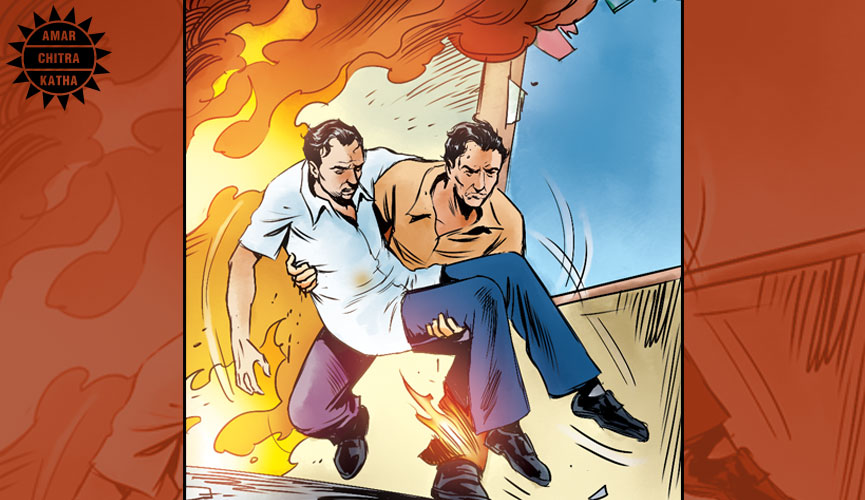
While working at ISRO, Dr. Kalam was saved from the explosion of payloads, the dangerous mix of pure sodium and thermite, by his colleague Sudhakar. This selfless act of Sudhakar inspired Dr Kalam to work even harder and make his life more meaningful and useful to others. He again faced danger in 2001, when the helicopter in which he was travelling crashed in Bokaro. Though nobody was injured, this second clash with death made Dr Kalam turn to a career in teaching and unfold his vision for India.
In June 2002, Dr Abdul Kalam got a call from the then Prime Minister, Atal Bihari Vajpayee. The PM expressed his wish to nominate him for the post of President. Vajpayee gave Kalam two hours to make up his mind and give his answer. After consulting with his family and friends, he accepted the offer and was sworn in as the 11th President of India on 25th July 2002.
The swearing-in ceremony of Dr. APJ Abdul Kalam was attended by the head of Ramanathaswamy Temple, the priest of Rameshwaram Church and the imam of Rameshwaram Mosque, apart from his family and colleagues.
When Dr Kalam started his tenure as the president of India, he initiated e-governance in Rashtrapati Bhawan and changed the way of work being done in his office.
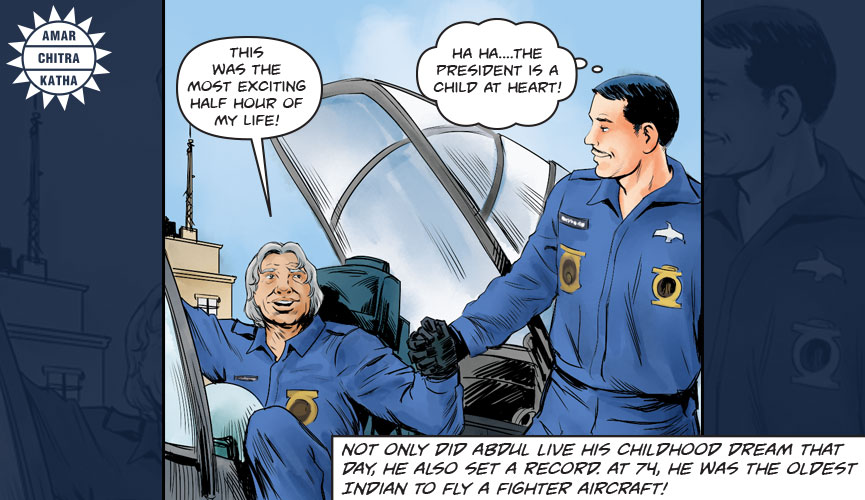
While visiting the Air force Base in Pune in June 2006, President Kalam expressed his dream of becoming a fighter pilot. Immediately, the pilots around him encouraged him to fly with them as the co-pilot. The President flew in the fighter aircraft for half an hour. With this feat, he not only achieved his childhood dream but also became the oldest Indian to fly a fighter aircraft at the age of seventy -four.
This visionary passed away on 27 July 2015 while delivering a lecture to students at the Indian Institute of Management, Shillong.
Read the story of Abdul Kalam in our title APJ Abdul Kalam, now available on the ACK Comics App, Kindle, Amazon, Flipkart, and other major e-tailers.